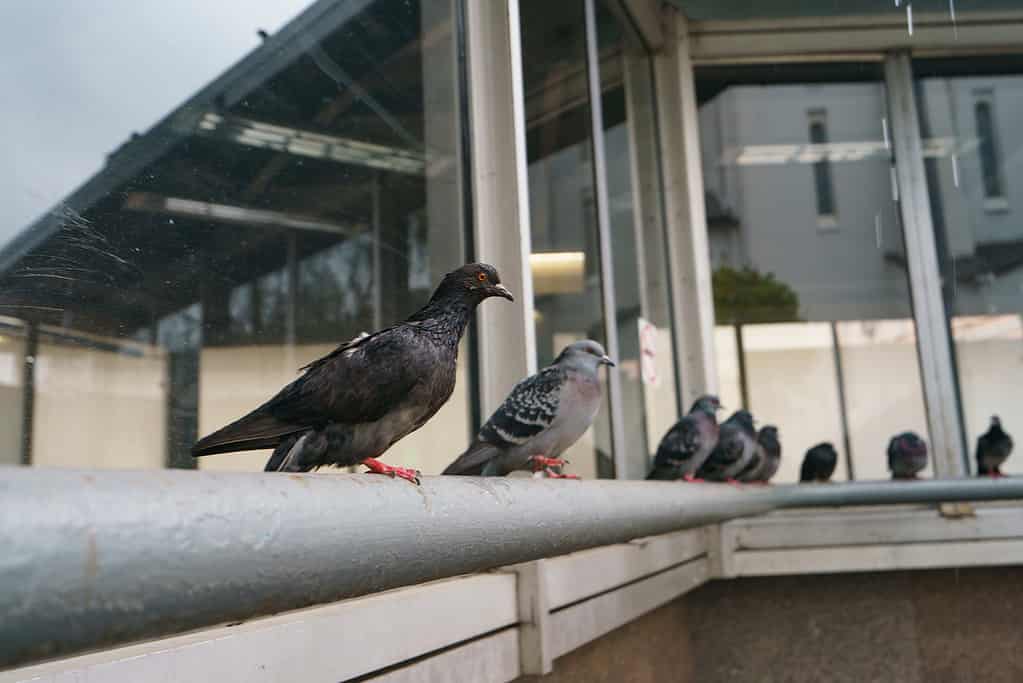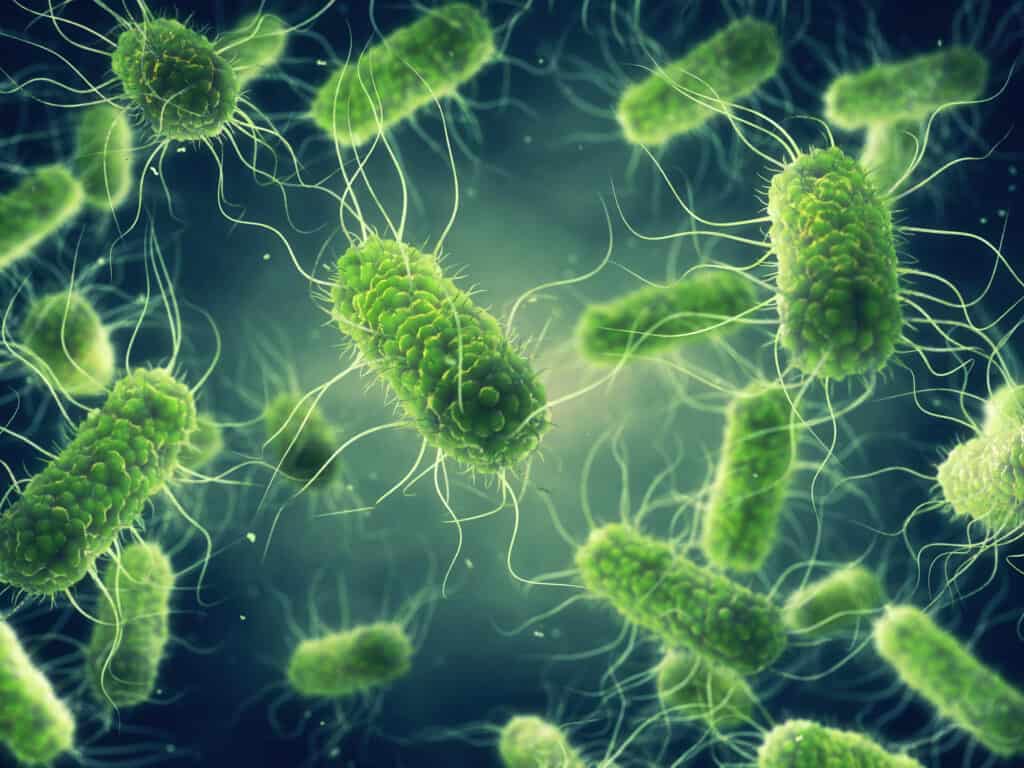Pigeons occupy almost every large city on the planet. At least 400 million city pigeons live among human beings, and their numbers continue growing. Where do pigeons come from, and why are there so many in big cities?
What Is a City Pigeon?

City pigeons are rock doves that live in urban areas.
©PauliusPeleckis/Shutterstock.com
A city pigeon in the United States is almost always a rock dove (Columba livia domestica) that lives in urban areas. However, many different species of pigeons worldwide act as city pigeons. Despite this, rock doves are the predominant pigeon in urban centers in any city on any continent.
City pigeons are the descendants of wild doves, and these wild doves still live on rocky cliffs around the Mediterranean Sea. Because they evolved in hard vertical habitats, urban centers became accessible places to occupy. A pigeon will choose a stone, marble, or concrete building over shrubs or trees if given a choice.
The abundance of city pigeons in cities supports other animals in urban environments. For example, birds of prey like sparrowhawks, screech owls, red-tailed hawks, and peregrine falcons have a diet consisting primarily of pigeons. Other animals, like opossums, feral cats, and raccoons, rely on pigeons as an accessible protein source.
The History of City Pigeons: Where Do Pigeons Come From?

City pigeons have lived with humans as domesticated animals for over 5000 years.
©Yury Karamanenko/iStock via Getty Images
Pigeons live in cities because people brought them into urban environments after domesticating their wild counterparts. For more than 5000 years, humans have cultivated a relationship with these birds. At first, the people of Mesopotamia put out houses for pigeons, which tamed them enough to become viable as cultivated food animals.
This means that city pigeons are not wild; they are feral. They are domesticated animals fending like feral cats that survive without direct caretaking. When living near people, water and food are available in quantities not seen in the wild.
Why Are There So Many Pigeons in Big Cities?

There are a lot of pigeons in cities because buildings are suitable habitats surrounded by food resources.
©MNStudio/Shutterstock.com
There are so many pigeons in big cities because there are a lot of accessible resources to support pigeon populations near habitats they enjoy. Food and water are abundant, and pigeons can’t travel far to find the sustenance they need to survive. There are also not enough wild predators to keep the pigeon population in cities in check.
Venice in Italy has the most pigeons living in the city, with around three birds for every citizen, and New York City supports enough pigeons that there is a bird for every inhabitant. The domesticated pigeons seen in American cities arrived with Europeans in the 1600s as they brought these birds with them to act as food sources and messengers. Pigeons made great messengers because they could find their way home despite being released hundreds of miles from their roosting place.
As technology and agriculture evolved with the dawn of modernism, the need to use pigeons for food and as messengers disappeared. This led to their owners releasing them into the wild, which inadvertently fueled the flourishing of pigeon populations in human habitats.
Eradicating pigeons is difficult. While some property owners and cities try to cull the population, it isn’t successful. As the population shrinks, pigeons reproduce more to fill the gap.
Are City Pigeons Dirty or Dangerous?

While pigeons aren’t dangerous, their accumulated feces are dirty and damaging.
©iStock.com/Iuliia Burmistrova
City pigeons are dirty, and their presence in huge numbers can be dangerous. That isn’t because of their disposition, which is generally passive and friendly. It’s because their accumulated feces is a problem.
In the last 100 years, humanity began seeing pigeons as pests in cities; some call them the rats of the sky. As their populations have grown on the streets because of their obsolescence as useful domestics, their mess causes concern among building owners and inhabitants.
One pigeon can produce up to 48 pounds of feces annually, and these droppings deteriorate and deface urban structures. Starving pigeons are more destructive because they create runnier feces that contain a lot of uric acid, which is more caustic than the solid feces of well-fed birds.
Diseases and Parasites Associated With Pigeons

Pigeon feces is a breeding ground for pathogens like Salmonella.
©nobeastsofierce/Shutterstock.com
Despite popular belief, pigeons are not a major vector for human disease. While pigeons as a species themselves do not pose much of a health risk, that doesn’t mean that their droppings are sanitary and pose no risk.
The feces of these birds can harbor diseases like Cryptococcus, Histoplasma, Candida, Clamydia psittaci, E. coli, and Salmonella. These agents that cause disease can grow in accumulated dried pigeon feces or fresh feces.
Pigeons also harbor parasites like ticks, fleas, lice, and mites. Specifically, some of the pests on pigeons include pigeon ticks (Argas reflexus), pigeon bugs (Cimex columbiaris), pigeon fleas (Ceratophyllus columba), red mites (Dermanyssus gallinae), and others. These parasites are vectors of human diseases and make handling the birds and their nests dangerous.
These ticks are arguably the most dangerous parasite that resides on pigeons. Their bites can cause anaphylaxis in sensitive people, and they transmit deadly diseases. About 40 percent of people are sensitive to this tick’s saliva, with about 8 percent having a severe reaction.
While pigeon ticks don’t desire human blood, they’ll go for it and infest a human’s space if many pigeons are nesting nearby. These ticks resort to biting humans when they aren’t able to dine on pigeon blood as often as needed.
The photo featured at the top of this post is © Coryn/Shutterstock.com
Thank you for reading! Have some feedback for us? Contact the AZ Animals editorial team.







